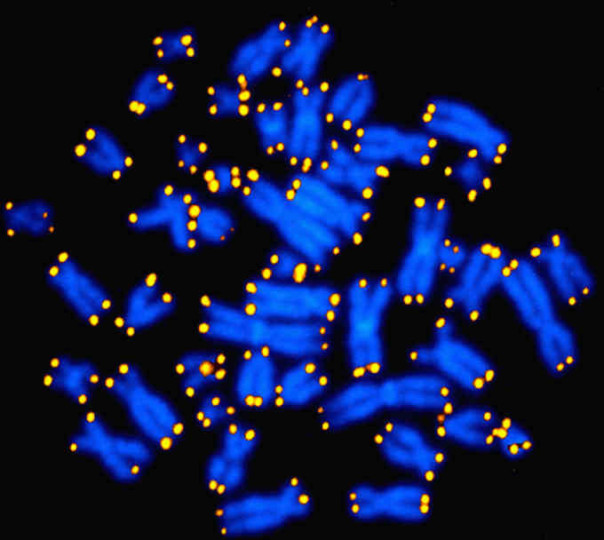A telomere is a section of repetitive DNA* found at the end of the chromatids that make up a chromosome. Unlike normal DNA, telomeres do not code for the production of proteins – they are non-coding DNA. The purpose of telomeres is to protect the important coding DNA during the DNA copying process; without telomeres the ends of each chromatid would be lost during cell division. Dr Elizabeth Blackburn, who won the 2009 Nobel Prize in Medicine or Physiology for her work on telomeres likened them to the plastic caps on the ends of shoelaces that prevent them from fraying.

Human chromosomes with telomeres highlighted in yellow.
Imagine that cell division works like photocopying, with each division making a perfect photocopy of the original. However, this photocopier is not perfect, and always loses the last five pages in the copying process, making the copy five pages shorter than the original. Adding telomeres to the end of chromatids is like adding many blank pages to the end of your original before the copying process starts. Although five pages are lost during each copy, there are many, many blank pages that can afford to be lost before important (i.e. coding DNA) pages begin to be lost.
During the aging process telomeres become shorter and shorter, and the shorter your telomeres are the more susceptible you are to disease and the shorter your lifespan is likely to be.
* In humans telomeres code the sequence “TTAGGG” over and over again.